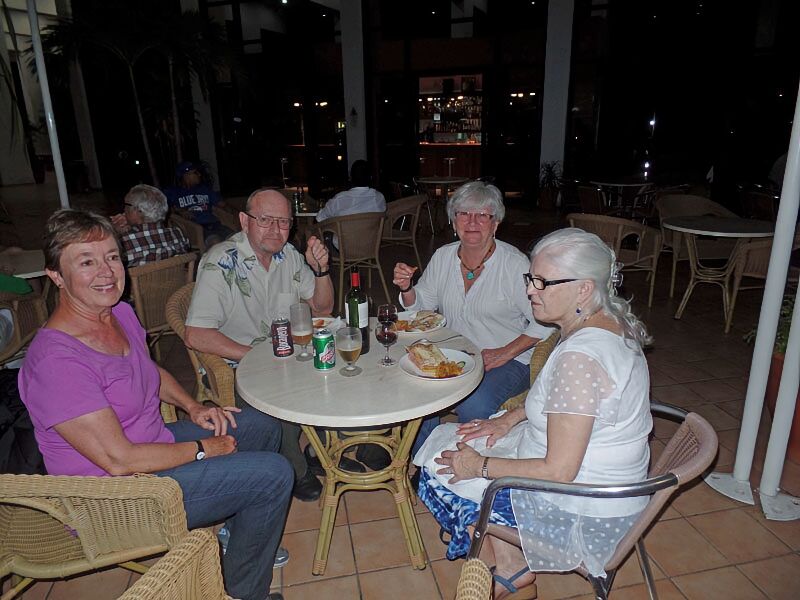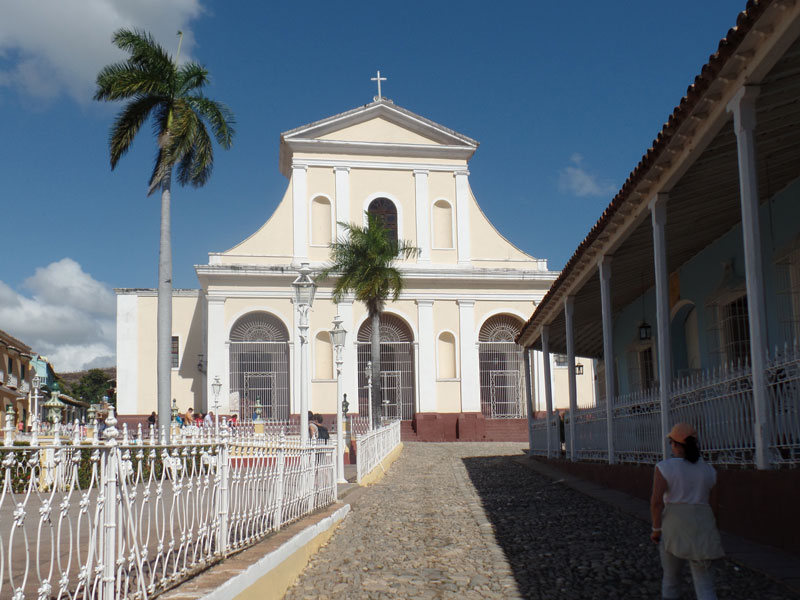
Trip to Cuba and New Orleans
Mike and Judy Henderson
January 25 to February 8, 2016
After purchasing an Internet access card (the night of 1/27/2016) I was able to upload pictures and web pages of our first two days in Cuba. Internet access is very limited and expensive in Cuba. A card costing 2 CUC gave me one hour of access. These access cards are available to ordinary Cubans in addition to tourists, but of course, not many Cubans can afford a computer or smartphone in the first place, let alone the access charges.
There was WiFi in the hotel lobby (not in the rooms), and there was a WiFi access point on one side of the main square in Cienfuegos. There were Cubans standing with computers and smartphones in the area of the access point, and some were obviously listening to music.
The Internet access was fast, although there was some additional delay when first establishing the connection. For example, when I uploaded about 5MB of pictures, it took a little while to get started but then uploaded the pictures rapidly. Since there are no direct high speed communications links between the US and Cuba (such as submarine optical cables), all my traffic was going through another country, maybe Mexico or perhaps even to Europe and then back to the US.
+++++++++++++++++++++++++++++++++++++++++++++
1/27/2016 Today we headed to Trinidad, Cuba, which is southeast of Cienfuegos.
The main square and the church were first on the list.

We found this group of Cuban musicians near the square, and we stopped to listen for a while.
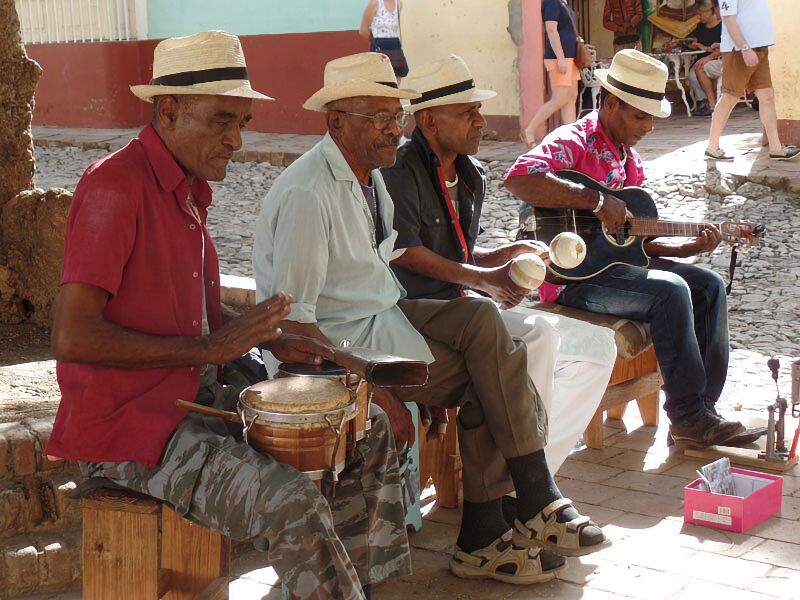
Nearby was another horse drawn vehicle. This one was picking up waste food from the restaurants to take back to the farm to feed the pigs.
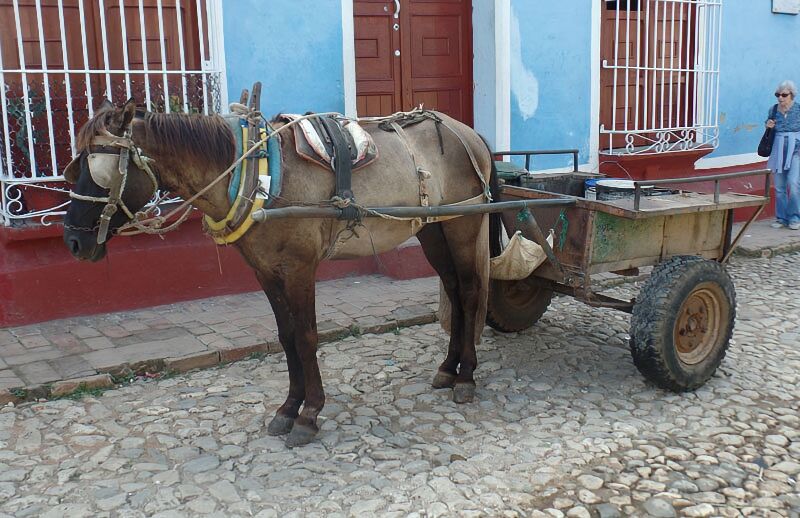
We went to the home of an artist and saw some of his work.
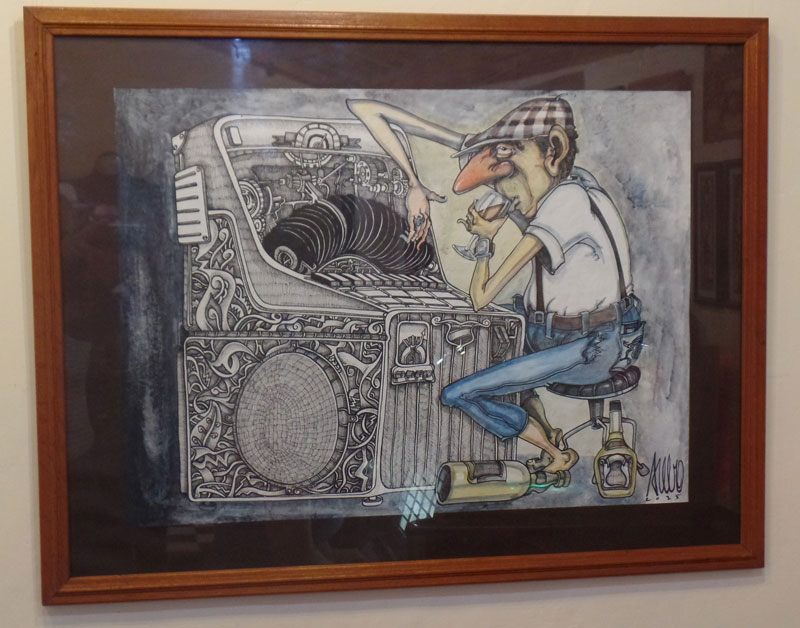
Then we went to a small cafe and had either coffee or a beer.
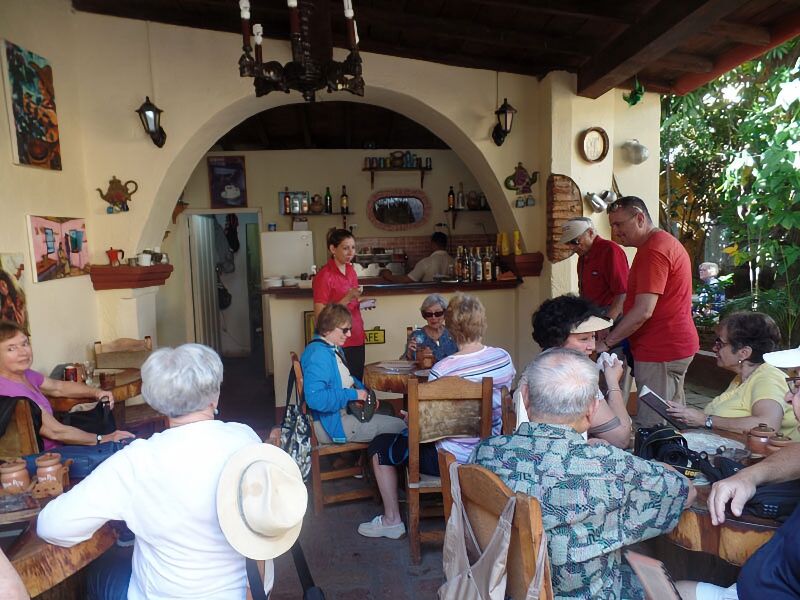
Going back to the main square, we went through the church.
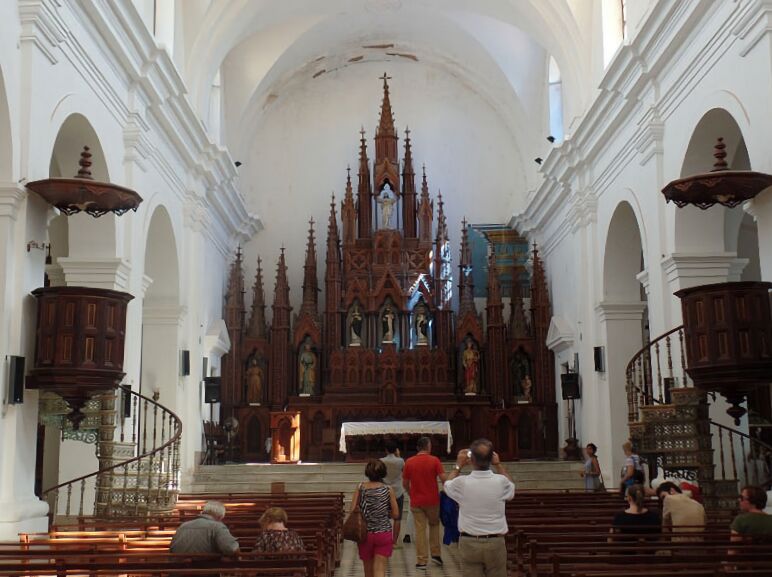
Then to a nice restaurant on the main square, just next to the church. Several dishes were offered but Judy and I had the fish.
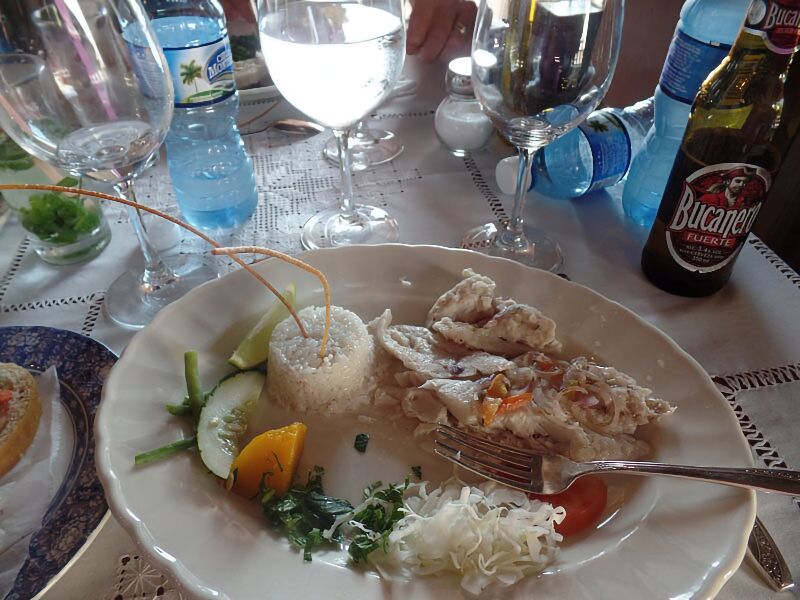
We then went to a family-owned pottery studio where we watched the potter create several different pots. The kiln was in operation and the studio was quite warm. I can't imagine what it would be like in the middle of summer.
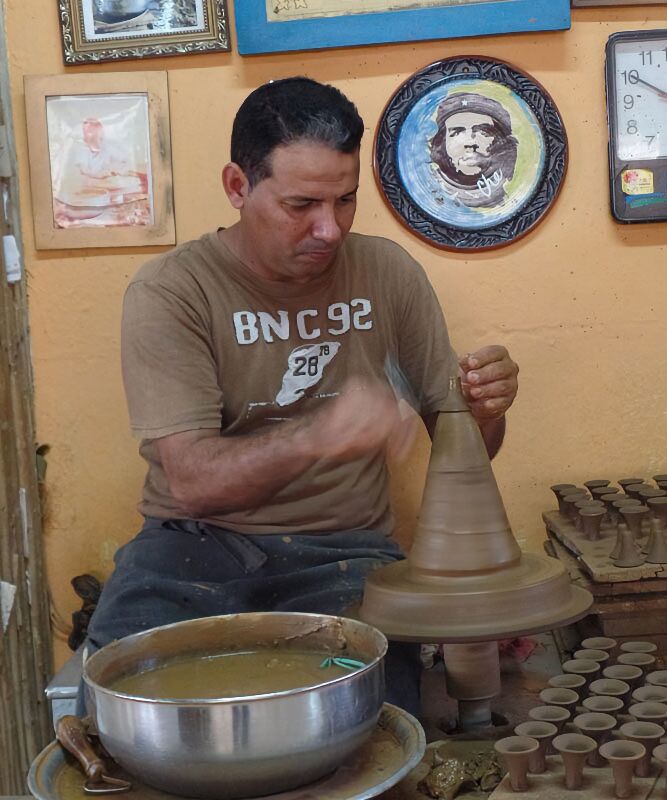
We next went to a farm from the colonial period which had preserved one of the presses used to squeeze juice from the sugar cane. It was operated by slaves and there were many of these presses on the farm in order to process the sugar cane crop.
[Side note: Sugar cane has to be processed fairly quickly after it's been cut, and that's why there used to be so many sugar mills in Cuba. But Cuba closed most of the mills and sold the equipment, which eliminated growing sugar cane in many areas.]
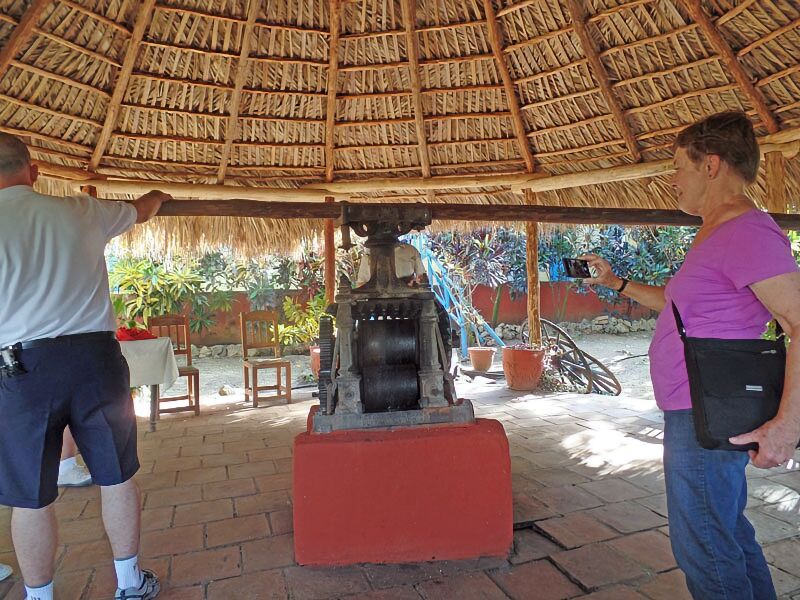
We headed back to the hotel through the valley where sugar cane was grown. It was a beautiful area, much more beautiful than this picture can show.
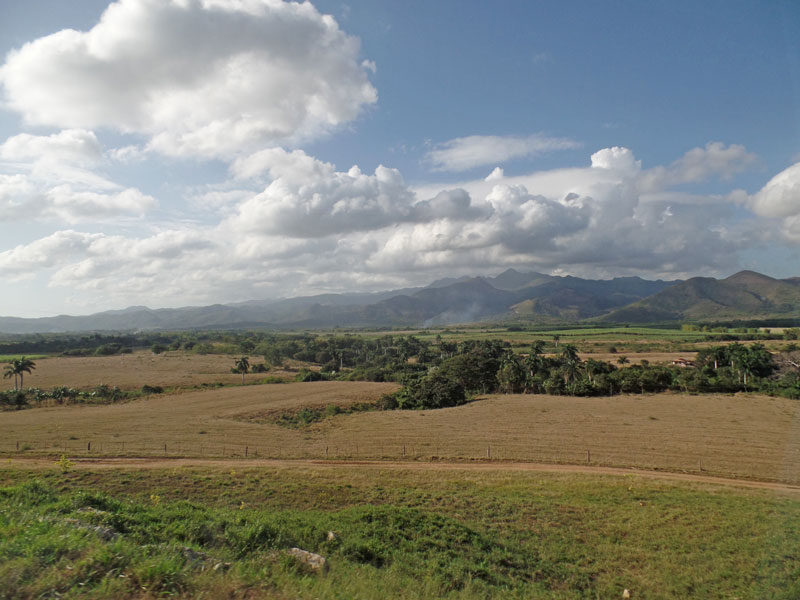
After the rich breakfast and lunch we had, Judy and I decided to just split a small pizza and drink a beer.
